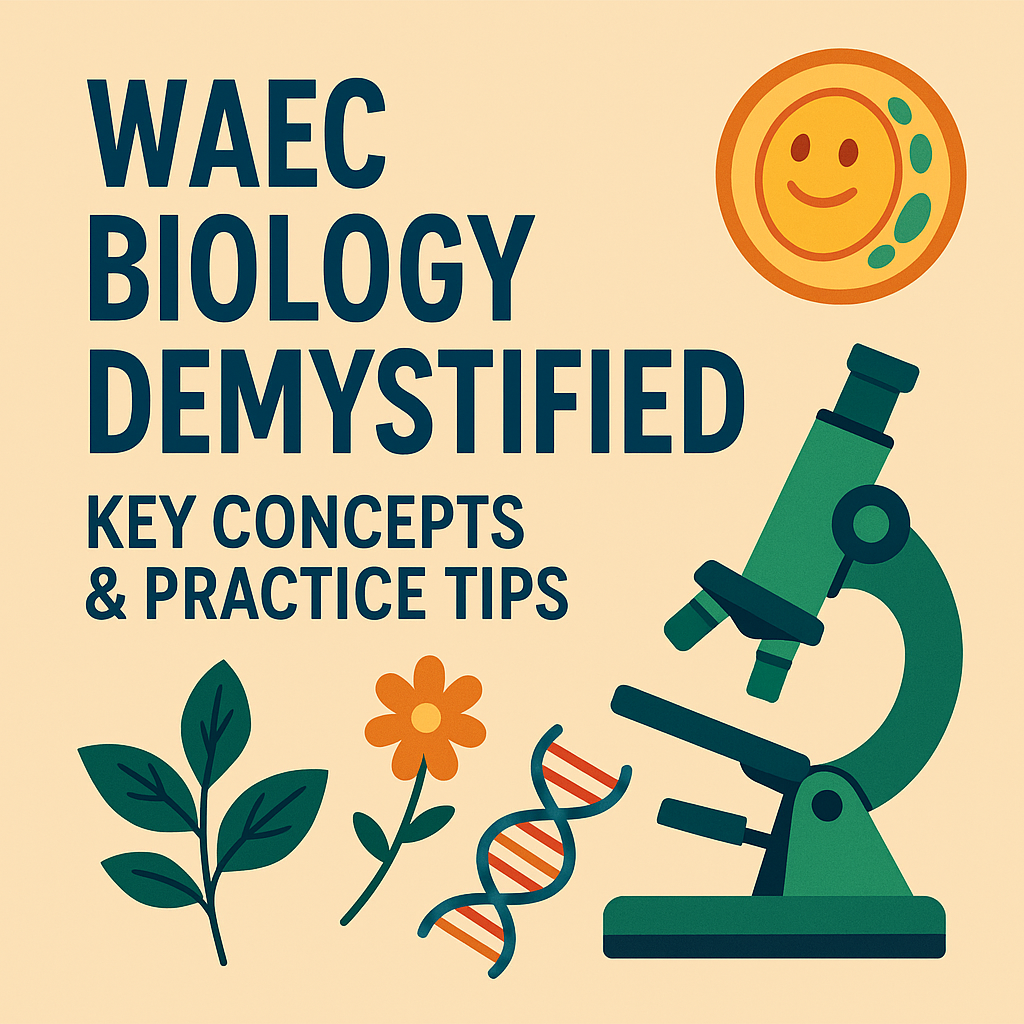1. Introduction
The WAEC Biology exam assesses understanding of life sciences through theory, practical skills, and data interpretation. Excelling requires mastery of cellular biology, ecology, physiology, and genetics alongside strong laboratory techniques.
This guide breaks down the syllabus, deciphers common question formats, and presents targeted strategies for diagram labeling, experiment questions, and terminology recall. You’ll learn to balance memorization with analytical skills and optimize your performance under exam conditions.
We’ll also highlight high-yield topics, recommend quality resources, and propose practice routines to ensure you enter the exam hall fully prepared.
2. Deep Dive: Syllabus & Topic Breakdown
2.1 Cell and Molecular Biology
- Cell structure, cell division (mitosis, meiosis)
- Biomolecules: structure, function
- Enzymes and metabolic pathways
2.2 Genetics and Evolution
- Mendelian genetics, pedigrees
- DNA structure, replication, transcription, translation
- Evolutionary mechanisms, speciation
2.3 Physiology and Homeostasis
- Human body systems: circulatory, respiratory, digestive, nervous
- Plant physiology: photosynthesis, transpiration
- Homeostatic mechanisms
2.4 Ecology and Environment
- Ecosystem components, energy flow
- Population dynamics, carrying capacity
- Conservation and biodiversity
3. Exam Strategy Tips
3.1 Diagram Labeling
- Use clear, capital letters; draw neatly.
- Label starting from left to right to avoid confusion.
3.2 Practical Questions
- Read experimental setups carefully.
- Identify variables: independent, dependent, control.
3.3 Data Interpretation
- Analyze graphs: state trends, identify anomalies.
- Refer to axis titles and units.
3.4 Terminology Recall
- Use precise biological terms; avoid colloquialisms.
- Practice definitions as flashcards.
4. Subject-Specific Overview
4.1 Cell Biology Essentials
- Differences between mitosis and meiosis; significance in reproduction.
4.2 Genetic Problem Solving
- Solve monohybrid and dihybrid cross problems using Punnett squares.
4.3 Physiology Applied
- Explain gas exchange in alveoli; role of surfactant.
4.4 Ecological Concepts
- Interpret logistic vs exponential growth curves.
5. Practice & Resources
5.1 Textbooks
- WAEC Biology Guide by Spectrum Publications
- Essential WAEC Biology by Stellen Publishers
5.2 Online Resources
| Resource | Features | Access |
|---|---|---|
| BioNinja | Revision notes, quizzes | Free |
| myCBTPrep | Timed mock exams | Free/Paid |
| CrashCourse | Video lessons on key topics | Free |
5.3 Mobile Apps
- Biology Exam Prep: Topic quizzes.
- Anatomy Learner: 3D models for physiology.
5.4 Mock Exam Plan
- Weekly topic-specific quizzes.
- Monthly full-length timed exams.
6. Conclusion
Success in WAEC Biology blends conceptual understanding with practical skills and data analysis. By mastering cell biology, genetics, physiology, and ecology reinforced with diagram practice and mock exams you’ll maximize your performance.
Begin by labeling one diagram and solving five genetics problems today. With consistent effort and strategic study, you’ll be well on your way to WAEC Biology excellence.
